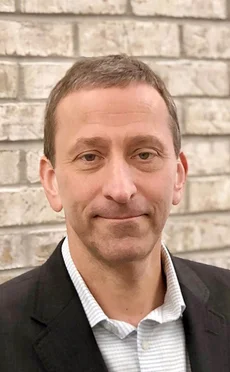
This article was paid for by a contributing third party.More Information.
Rethinking surveillance: a focus on risk and data centralisation

Effective surveillance continues to be a big concern for firms worldwide, for which they need to stay ahead by making systems both predictive and preventative, with a focus on data centralisation. Lee Garf, general manager, compliance at NICE Actimize, explains why surveillance efficiency has become even more critical today
Financial institutions’ focus is on streamlining their compliance operations, particularly with respect to end-to-end trade surveillance and communications monitoring, through trading floor recording and archiving. With today’s unpredictable economy and an eye to tightening processes, restructuring staffing and improving efficiency, operational trends that reflect the changing nature of how banks manage surveillance and assess risk, are emerging.
According to a 2022 survey by Coalition Greenwich, surveillance capabilities have grown substantially over the past three years. This has been driven, in part, by the Covid-19 pandemic, alongside the subsequent emergence of more communication channels and the explosion of data – which has increased by approximately 12% in the past year alone. Lee Garf, general manager, compliance at NICE Actimize, says this dramatic growth requires renewed consideration, as financial institutions rethink risk priorities and the use of updated surveillance capabilities.
Garf discusses how banks are expanding their focus on surveillance processes to better serve the bank and its customers.
Financial insitutions are thinking about surveillance efficiency now more than ever. What has changed in the market to make this a critical issue?

Lee Garf: There are several reasons surveillance efficiency has become even more critical. While it is perhaps apparent this is to consider economic uncertainty, rising costs and the necessity to do more with less, what has changed is the explosion of functionality that surveillance serves. The crucial areas of conduct and communications monitoring have altered the landscape of surveillance forever, not to mention enhanced the value those functions bring to any organisation.
The drivers for this change, reflected in the increased instability in the market, have left gaps in surveillance capabilities as vendor consolidation – and the market exits of others – has increased. operational uncertainty. Reputational concerns and the impact of regulations have also had an effect. Even with market uncertainty, technology spending is still likely to continue to accelerate in 2023 and beyond, as financial institutions understand they can’t work to improve the efficiency of surveillance‑related functions alone.
According to a NICE Actimize survey of financial institutions, 60% of firms need to monitor newer communication channels, including Microsoft Teams, Bloomberg Chat, Zoom and WhatsApp. As a result, many firms are being levied fines as hefty as $200 million because of record-keeping and surveillance lapses. Aligned with that trend, regulators and financial services firms worldwide are placing a greater focus on misconduct, as evidenced by growing fines and personal liability for senior managers. And, with the proliferation of data, growing misconduct has become harder to find.
If a financial institution wants to improve its operational risk profile, where does it begin?
Lee Garf: We see that spending on regulatory technology has increased steadily each year from 2020, with estimates hitting $1.8 billion in 2022, and steady increases were seen across buy-side and sell-side firms. With this increase come decisions on where and how to target spending, and ensuring operational risk is strategically aligned. Paramount to the success of a compliance programme that can keep up is a clear definition of the changes you want to prioritise within the financial firm’s risk assessment framework. This includes an assessment of all the possible threats of misconduct, vulnerabilities and potential impacts. This creates the guide rails to build a people, processes and technology stack to protect the firm. But how do you do that?
With regard to the financial institutions we work with, we focus on two main areas and tenets for building a future-proof tech stack. The first is attention to the centralisation of data for complete capture, which includes a focused plan to transition to the cloud. Second is openness and flexibility, in both managing the data and analytics, and how you can customise it to fit your business requirements.
NICE Actimize has created a platform that provides end-to-end trading recording and market surveillance capabilities. Describe how this new approach benefits risk management and enhances surveillance and trading recording effectiveness.
Lee Garf: Compliancentral is a cloud-based, end-to-end communications monitoring and trade compliance platform that helps buy-side, sell-side and online trading platforms – as well as insurance and wealth management firms – capture and holistically analyse all types of employee communication, along with trade and behavioural data, to uncover hidden conduct risk.
With Compliancentral, firms can build a culture of good behaviour, comply with global regulations and ensure regulated employees are playing by the rules. NICE Actimize’s complete solution and unmatched capabilities in compliance recording, and trade and communications surveillance, empower firms to shine the brightest light on employee misconduct by capturing and holistically analysing every type of regulated communication and trade, and offering a treasure trove of other data.
Whether through traditional telephony channels or over Microsoft Teams, Cisco Webex, Zoom, WhatsApp and more, NICE Actimize’s Compliancentral platform captures, retains and monitors all employee communications. It unifies communications capture, archiving and surveillance into a robust cloud compliance platform, eliminating costly integrations and ensuring interoperability.
Once firms determine how to centralise data and do so, where might they expect to achieve efficiency?
Lee Garf: Once an operation has centralised the data, and assuming you’ve normalised it, you need a solution that leverages advanced capabilities of self-service/DIY analytics, natural language processing and alert classification. As a result, your compliance analysts can spend less time reviewing and dispositioning alerts, and more time proactively investigating conduct risk and market abuse cases. Self-service tools enable agile customisation and faster deployment of custom analytics. In addition to leveraging out-of-the-box analytics, you can quickly develop, customise and self-tune models tailored to the business requirements and needs.
Unlike legacy systems that treat all alerts the same, NICE Actimize’s SURVEIL-X relies on supervised machine learning models that use alert attributes and dispositions of previous (historical) alerts to accurately assign confidence scores to new alerts (which indicate their likelihood of being true positives).
As we face uncertain times, this is not the environment in which we want to reduce focus on compliance and surveillance – it is the opposite. Now is the time to invest in advanced surveillance capabilities to protect firms from misconduct, while emphasising how to derive significant value in terms of productivity and efficiency in surveillance.
Sponsored content
Copyright Infopro Digital Limited. All rights reserved.
You may share this content using our article tools. Printing this content is for the sole use of the Authorised User (named subscriber), as outlined in our terms and conditions - https://www.infopro-insight.com/terms-conditions/insight-subscriptions/
If you would like to purchase additional rights please email info@risk.net
Copyright Infopro Digital Limited. All rights reserved.
You may share this content using our article tools. Copying this content is for the sole use of the Authorised User (named subscriber), as outlined in our terms and conditions - https://www.infopro-insight.com/terms-conditions/insight-subscriptions/
If you would like to purchase additional rights please email info@risk.net
